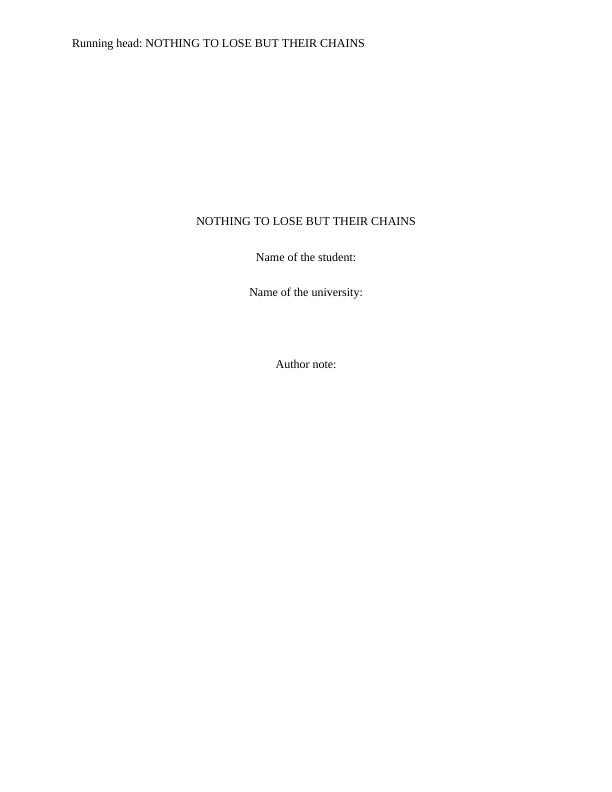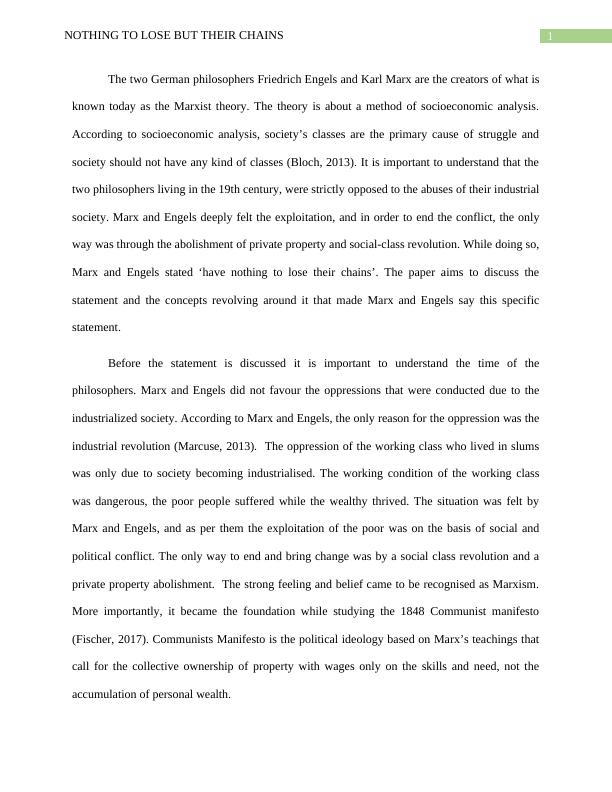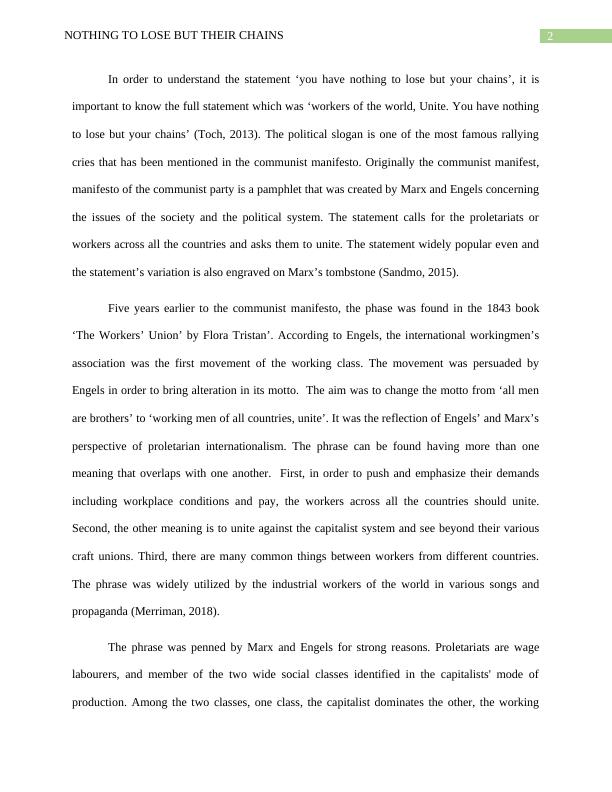Nothing to Lose But Their Chains
6 Pages1560 Words197 Views
Added on 2023-04-20
About This Document
This article discusses the statement 'You have nothing to lose but your chains' by Marx and Engels and its significance in the Marxist theory. It explores the concept of socioeconomic analysis, the call for workers to unite, and the need for a social class revolution and abolishment of private property. The article also delves into the historical context of the industrial revolution and the oppression faced by the working class.
Nothing to Lose But Their Chains
Added on 2023-04-20
ShareRelated Documents
End of preview
Want to access all the pages? Upload your documents or become a member.
The Communist Manifesto: Marx's Argument on Capitalism's Corruption Beyond Proletariat's Work
|7
|1818
|102
Capitalism and Stability in Society: An Analysis of The Communist Manifesto
|7
|1833
|264
The Communist Manifesto - An Understanding
|6
|1458
|97
Marxism: Theory and Impact on Gender Equality
|9
|2507
|58
Communist Manifesto Assignment PDF
|9
|2793
|167
Theories of Sociology
|4
|630
|40



